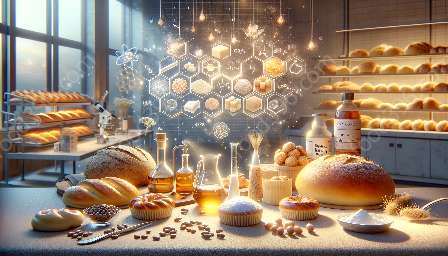Are you passionate about baking? Do you want to delve into the complexities of leavening agents and chemical reactions? Let's explore the captivating world of acidic leavening agents and their pivotal role in the art of baking.
Understanding Leavening Agents and Chemical Reactions
Before delving into the specifics of acidic leavening agents, it's essential to understand the broader concept of leavening agents and their interaction with chemical reactions in baking. Leavening agents are crucial components in baking, serving to lighten and soften the texture of baked goods. They work by introducing air or other gases into the batter or dough, thereby creating a light and airy crumb structure in the final baked product.
Chemical leavening agents, in particular, play a fundamental role in this process. They react with certain components in the batter or dough, resulting in the release of carbon dioxide gas. The expansion of these gas bubbles during baking contributes to the desired texture and volume of the baked goods.
Exploring Acidic Leavening Agents
Acidic leavening agents are a specific category of chemical leavening agents that are widely used in baking. These agents rely on acidic compounds to trigger the release of carbon dioxide gas and subsequently leaven the batter or dough. One of the most common acidic leavening agents is cream of tartar, which is a byproduct of winemaking and serves as an important ingredient in many baking recipes.
Other acidic leavening agents include buttermilk, yogurt, and vinegar, all of which contain natural acids that facilitate the leavening process. Additionally, certain acidic ingredients such as molasses, citrus juice, and honey can also contribute to the acidic environment necessary for leavening in baking.
The Chemical Reactions Behind Acidic Leavening
Understanding the chemical reactions that occur with acidic leavening agents provides valuable insight into the science of baking. When an acidic leavening agent comes into contact with a basic ingredient in the batter, such as baking soda (also known as sodium bicarbonate), a chemical reaction ensues.
The acid in the leavening agent reacts with the alkaline baking soda, resulting in the formation of carbon dioxide gas and other compounds. This gas is then dispersed throughout the batter, causing it to rise and creating the desired texture and structure in the final baked product.
Incorporating Acidic Leavening Agents in Baking Science and Technology
The utilization of acidic leavening agents is not only a time-honored tradition in baking but also an integral aspect of baking science and technology. The careful selection and precise combination of acidic leavening agents enable bakers to achieve the desired texture, flavor, and appearance in their creations.
Baking technology continues to evolve, and the understanding of acidic leavening agents plays a pivotal role in this advancement. Innovations in ingredient sourcing, formulation, and production techniques are constantly shaping the landscape of baking science, with a keen focus on optimizing the performance of acidic leavening agents.
Conclusion
As you embark on your explorations in the world of baking, remember that the intricate interplay between acidic leavening agents and chemical reactions underpins the art and science of creating delightful baked goods. Understanding the role of these agents not only enriches your knowledge but also empowers you to elevate your baking endeavors to new heights.


